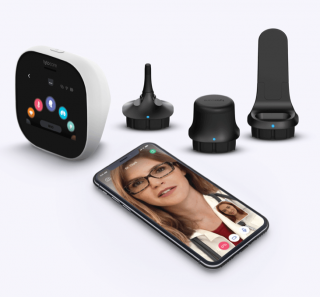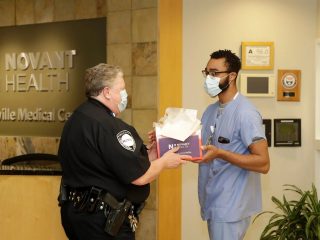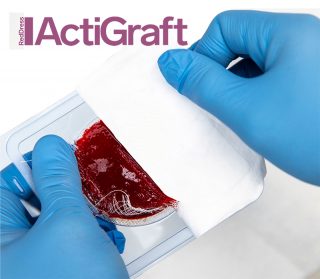A significant part of 2020 has been riddled with the COVID-19- 19 pandemic, thus negatively affecting the healthcare sector. To combat some of the challenges in treating conditions such as COVID-19 and the healing of chronic wounds, there are several healthcare innovations to look out for, at present, as well as in the upcoming year.
According to WHO Health Innovation Group (WHIG), a sister group of the World Health Organization (WHO) whose premise is to endorse and pursue health innovation within the organization, “health innovation is to develop new or improved health policies, systems, products, and technologies, as well as services and delivery methods that improve people’s health, with a special focus on the needs of vulnerable populations.”
2021 Healthcare Innovations
TytoCare
This special stethoscope was designed to ensure that COVID-19 patients receive the necessary healthcare while they remain in their homes.
How does it work?
The innovative feature of this device is that it listens to the patients’ hearts and displays images of their lungs to a care team that can come to their aide at any given time. With Tyto, a healthcare provider can examine your heart, lungs, throat, ears, skin, abdomen, heart rate, as well as body temperature, and diagnose as well as treat many of the most common conditions, such as:

TytoCare Kit
- Ear infections
- Cold and flu
- Fever
- Headaches
- Eye irritation
- Congestion
- Sinus pain
- Allergies
- Sore throat
- Coughs as well as upper respiratory issues
- Bug bites and rashes
- Constipation as well as stomach aches
Zipline
The second healthcare innovation is in the United States of America, wherein Zipline, a drone delivery company that delivers medical supplies to remote areas, has partnered with Novant Health in North Carolina, where they use drones to dispense supplies to hospitals.
Part Fulfilment Center, Part Droneport

Zipline
Zipline operates from distribution centers placed at the center of each region of service. Part medical warehouse, part drone airport, each distribution center can make hundreds of deliveries each day to any point within a 22,500+ square kilometer (8,750+ square mile) service area. Creating a national delivery network with a series of distribution centers.
The Delivery Experience
Zipline works with clients to design a delivery experience that meets their needs. Where valuable, Zipline provides third-party logistics (3PL) services. In these instances, Zipline employs highly trained staff, including licensed pharmacists, to pick as well as pack orders on clients’ behalf. Zipline also cross-docks packages that are prepared by clients in instances like home prescription delivery where it is more efficient to fill patient-specific prescriptions centrally.
ActiGraft
Coming to South Africa and not falling short of another innovation to anticipate in the healthcare sector is One Eight Innovation’s ActiGraft. It is an innovative treatment that heals chronic wounds by using patients’ own blood.
ActiGraft is based on RedDress’ proprietary patented technology. It is an FDA-cleared regenerative wound care solution that enables health care providers to produce—in real-time—in vitro blood clots from a patient’s whole blood. Once applied, the blood clot tissue serves as a protective covering, biologic scaffold, as well as wound micro-environment to promote the natural wound healing processes of the body.

ActiGraft
Chronic wound treatments
ActiGraft is the only autologous biologic wound care product available in South Africa that actively promotes the wound healing of non-healing wounds. Not only that, ActiGraft is particularly different from current treatments as well as procedures in chronic wound treatments.
Furthermore, ActiGraft actively pushes the body to heal the non-healing wounds. It is thus is able to heal wounds no other treatment is able to heal. It is a powerful treatment to prevent the amputation of limbs.
Moreover, healing a non-healing wound has a profound effect on the patient’s life. It allows them to be mobile again. This, thereby, eliminates severe pain, avoiding infection, as well as saving money due to prolonged repeated non-effective treatments.
Conclusion
It’s imperative to acknowledge the factors grossly affecting the healthcare sector. This has resulted in the urgency for the healthcare sector to urgently adopt innovative ways for effective healthcare. Essentially, enhanced innovation trends, particularly in the healthcare sector, needs healthcare practitioners to be harbingers of a healthcare system that is more effective, as well as resourceful, and fair.



![women [longevity live]](https://longevitylive.com/wp-content/uploads/2020/01/photo-of-women-walking-down-the-street-1116984-100x100.jpg)










